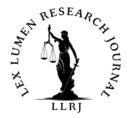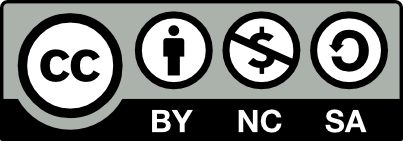Written by Saksham Goyal
Student, 1st Year BBALLB (Hons),
School of Law, Forensic Justice & Policy Studies, NFSU Delhi.
September 2025
Justice is not only meant to be done but also meant to be seen yet when the politics trespass the boundaries of influence then Will the Justice be able to serve its even basic purpose for which it meant? Once quoted by Alexander Hamilton that the judiciary would be the ‘least dangerous branch’ of government but does it fit better in world’s largest democracy or politics driven India ?
In India , The Judicial Appointments are debated as there been lot of instances in past which questions the political influence in Judicial Appointments . In 2017, Central Government halted the elevation of then Chief Justice of Uttarakhand High Court K.M. Joseph on spurious grounds.
This paper seeks to critically examine whether political involvement in judicial appointments undermines the very foundation of justice or whether it represents a necessary influence in a democratic system.
Separation of Powers and Judicial Appointments: A Prologue
The doctrine of separation of powers, though not explicitly enshrined in the Indian Constitution, is deeply embedded in its structure. Supreme Court through its multiple rulings has recognized it under basic Structure of Doctrine which cannot be violated or amended. This raises an important question: does the doctrine indirectly restrict the legislature and executive from interfering in judicial appointments, thereby safeguarding justice? Or, conversely, does complete judicial control over appointments risk leading to an abuse of power by the judiciary itself?
Though Doctrine of Separation of Powers itself has component of Check and Balances which can be understood that Legislature can even make the Judiciary accountable without directly interfering in Judicial Appointments as long as it functions under the constitutionally defined boundaries.
Constitutional framers like Dr. B.R. Ambedkar warned against the concentration of power in any single organ of the State. While judicial independence was considered essential, they also envisioned mechanisms of accountability. Globally, too, no democracy leaves judicial appointments entirely to one branch—while the U.S. balances executive nomination with legislative confirmation, the U.K. relies on an independent appointments commission.
Supreme Court Advocate on Records. Vs. Union of India (2015) or popularly known by 4th Judge Case which stemmed from a group of petitions challenging the validity of the Constitution (Ninety-Ninth Amendment) Act, 2014 (99th Amendment) along with the National Judicial Appointments Commission Act, 2014 (NJAC Act). These Acts sought to replace the prevailing collegium system used for making appointments to the higher judiciary with the National Judicial Appointments Committee (NJAC). The Court by a majority of 4:1 struck down the 99th Amendment and consequently the NJAC Act as unconstitutional and void. The majority including Justices Khehar, Lokur, Goel and Joseph, held that the involvement of the executive in the appointment of judges impinged upon the primacy and supremacy of the judiciary, and violated the principle of separation of powers between the executive and judiciary which formed part of the basic structure of the Constitution. Art
Politics: A Stain on Judicial Appointments
Let’s not be contemporary but dive into Historical instances as simply jotting down current won’t make sense. In Kesavananda Bharti Case of 1973, Supreme Court of India (13-judge bench, the largest ever in India) By a 7–6 majority, the Supreme Court held that: Parliament has wide powers to amend the Constitution under Article 368. But it cannot alter or destroy the “Basic Structure” of the Constitution (like democracy, rule of law, judicial independence, separation of powers, fundamental rights, etc.). Why 1973 is important for “Politics vs Judiciary” This judgment limited Parliament’s (political branch) power, ensuring judiciary remains a guardian of the Constitution. It led to political backlash — Indira Gandhi’s government tried to weaken judicial independence after this case: Superseding senior judges in appointment of Chief Justice of India (Justice A.N. Ray was appointed over three seniors who had ruled against the government). Later, during Emergency (1975–77), executive interference in judiciary reached its peak.
Does this instance won’t tilt it to the argument of political influence can be dangerous to judiciary which will lead to undermining justice? (Another Instance) The similar issue rolled out in 2023 wherein Central Government halted the elevation of Uttarakhand High Court Chief Judge K.M. Joseph on the two broad reasons which are that Justice is too junior in list of high court judges and 11 Chief Justices ranked above him which was very lame reason as in fact, there have been multiple instances were senior judges have been overlooked in favor of a more deserving candidate of outstanding merit. And another reason being asserted that there are regional imbalances in the Supreme Court as Kerala is disproportionately better represented. Kerala already has 1 judge in the Supreme Court and it has been stated that a 2nd judge from there would make the region over-represented. This is again a false notion as Kerala has in the past had as many as 3 judges in the apex court and other regions like Maharashtra are also over-represented.
There are lot of judges of Supreme Court or High Court who post retirement affiliated themselves with political party which shows how politics cooked the judiciary. In 2024, Former Madhya Pradesh High Court judge Rohit Arya has joined the Bhartiya Janata Party, three months after his retirement, citing Prime Minister Narendra Modi’s public-oriented developmental work and the BJP’s policies as his primary influences and Our Honourble Prime Ministeer Narinder Modi attending Ganesh Chaturthi Celebration at ex CJI DY Chandrachud which put a stain on the very foundation of our Basic Structure i.e Separation of Power
Judicial independence is the cornerstone of a constitutional democracy, and any form of political interference in appointments weakens this foundation. When the executive plays a dominant role in deciding who becomes a judge, the appointees may feel indebted to the political authority that elevated them, which compromises their neutrality. Instead of interpreting the law without fear or favour, such judges may be tempted to tilt in favour of political interests, thereby eroding the trust placed in them by the public. consequence of politicisation is the undermining of meritocracy. Judicial appointments influenced by politics often favour individuals with ideological loyalty or proximity to those in power rather than legal brilliance and integrity. This dilutes the quality of the judiciary and hampers its ability to act as the guardian of constitutional rights. Moreover, when justice appears to be influenced by political considerations, the public perception of the judiciary is severely damaged. As the adage goes, “justice must not only be done but must also be seen to be done.” Political interference creates suspicion that courts are serving political masters instead of the people. Lastly, unchecked political influence can lead to what scholars term “executive capture.” If the executive dictates judicial appointments, it ensures favourable verdicts in matters such as constitutional amendments, electoral disputes, or corruption cases. This transforms the judiciary from being the sentinel of democracy into a pliant instrument of those in power, weakening the entire democratic framework.
Thus, politics in judicial appointments is not just a stain but a corrosive force that eats away at the ideals of justice, impartiality, and constitutional governance.
The debate over politics in judicial appointments strikes at the heart of constitutional governance. On one hand, the executive and legislature claim a stake in the process, citing accountability and transparency as their justifications. On the other, the judiciary insists on its independence as an essential feature of the Constitution, warning that political intrusion threatens to compromise justice itself. History, from the supersession of judges in 1973 to the NJAC controversy in 2015, demonstrates that excessive political influence risks staining the judiciary with partiality, undermining its role as the guardian of rights. Yet, a judiciary completely insulated from democratic oversight may itself become opaque and unaccountable.
Thus, the challenge lies not in denying politics any role but in striking a delicate balance—where appointments are transparent, merit-based, and free from partisan motivations, while still accountable to constitutional principles. Justice must not only be independent but also be seen to serve the people rather than the powerful. Only when this equilibrium is maintained can judicial appointments strengthen, rather than weaken, the foundations of India’s democracy.
References:
Dr B.R. Ambedkar, Reply to the debate on the draft provisions of the Constitution on the Supreme Court, (24-5-1949), in Constituent Assembly Debates, Vol. VIII, 258…. (n.d.).
India, P. T. (n.d.). Retrieved from NDTV : https://www.ndtv.com/india-news/3-months-after-retirement-madhya-pradesh-high-court-judge-rohit-arya-joins-bjp-6110041
Kesavananda Bharati Sripadagalvaru and Ors. vs. State of Kerala and Anr., (W.P.(C) No. 135/1970) (Supreme Court Of India 1973).
nsights, Insights into Editorial : Judiciary v. Executive — Judicial Appointments, #INSIGHTSIAS, (22-8-2016), …. (n.d.).
Prime Minister Indira Gandhi had appointed several Judges, arousing criticism and dissent from judiciary as well as from general public…. (n.d.).
Rai, S. (2017). Retrieved from SCC Online: https://www.scconline.com/blog/post/2017/05/23/judicial-appointments-in-india-a-critical-analysis/#_ftnref1
See C. Raj Kumar & Khagesh Gautam, Questions of Constitutionality – The National Judicial Appointments Commission, 50 EPW 42 (2015). See also, Indira Jaising, National Judicial Appointments Commission – A Critique, 49 EPW 6 (2014)…. (n.d.).
Supreme Court Advocates-on-Record Assn. v. Union of India…, Writ Petition (Civil) No. 1303 of 1987 (Supreme Court of India 2015).


